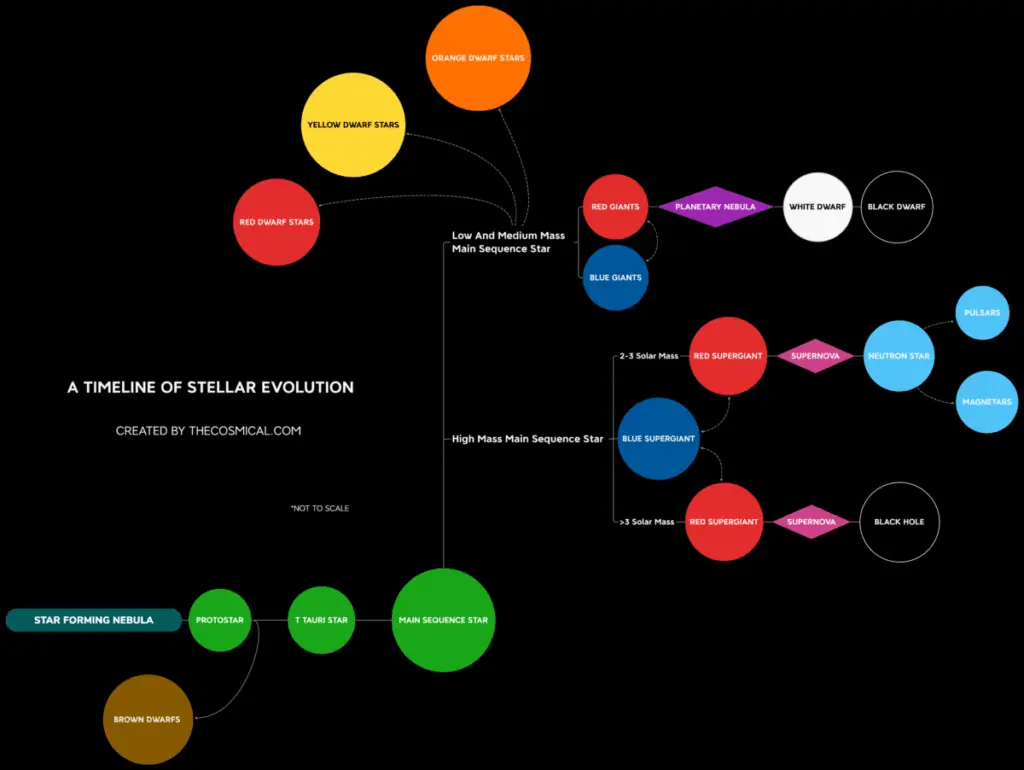
All the stars we see are born from clouds of gases that are scattered throughout the universe. From a protostellar core to the supergiants that are as big as our entire solar system, let’s explore them all!
Although the variety of stars are numerous, they can generally be categorized into 8 types:
- Protostar
- T Tauri Star
- Main-Sequence Stars
- Non-Main-Sequence Stars
- Neutron Stars
- Giant and Supergiant Stars
- Binary Stars
- Variable Stars
The general rule of thumb across stars is that the more massive a star (greater mass), the higher its temperature, which also determines its color, with the coolest stars shining in red and hottest shining in blue.
It should be known stars are also classified based on their luminosity (total amount of energy radiated each second) under the Yerkes Luminosity Classification. This classification scale assigns stars to groups based on the width of their spectral lines, which differentiates stars with the same temperature based on their size. With class Ia being the most luminous and VII the least.
| Type/Class | Star |
| Ia | Very Luminous Supergiants |
| Ib | Less Luminous Supergiants |
| II | Luminous Giants |
| III | Giants |
| IV | Subgiants |
| V | Main-Sequence Stars |
| VI | Subdwarfs |
| VII | White Dwarf |
1. Protostar
The universe might seem empty, but it’s actually full of gas and dust that is spread so thinly it’s naked to the human eye. These specks of matter are sometimes collected into big clouds called a nebula, which can stretch many light-years wide.
Within these nebulas are where protostars are born.
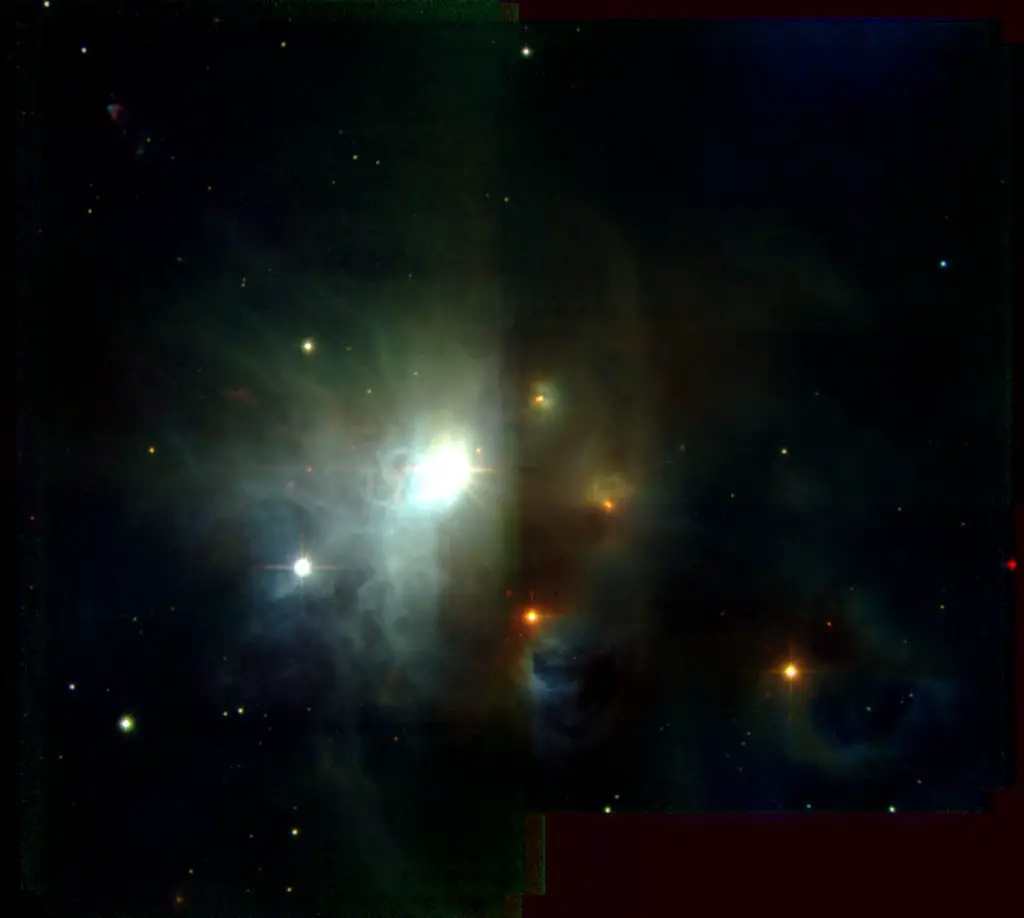
Protostars are the first step to the formation of a star during stellar evolution. The formation of low-mass stars like our sun, or any star for that matter, all start with a protostellar core created by the gravitational collapse of the molecular clouds of gases and dust in a nebula.
This gravitational collapse occurs through the process of accretion, where gravity pulls the clouds into a ball. The gravitational energy then heats these gases as they get closer to the core and emit radiation. The more matter this core pulls in, the denser it becomes, which traps the radiation inside and heats the protostar even faster.
A star approaches the end of its protostar stage when the radiation and stellar wind begin blowing away the surrounding shell of gas and dust enveloping the protostellar core, signaling the beginning of its life as a T Tauri Star.
Despite its name, a protostar is not considered a main-sequence star (the most common star type in the universe) as its core has not become hot enough for hydrogen fusion to take place (core needs to exceed 10 million Kelvins).
The protostar’s luminosity comes only from the heating of its core as it contracts the molecular clouds near them. But this “star” is usually surrounded by the gases it will consume, so it is difficult to detect them on the visible light wavelengths. As such, astronomers need to use infrared or microwave wavelengths.
The amount of time a protostar may remain in this stage depends entirely on the material available and its end mass. The more massive a star, the shorter amount of time it will spend in the protostar stage. This is largely due to the longer amount of time needed for low-mass stars to accrete enough matter to increase their core temperature. In contrast, high-mass stars generally have enough material surrounding them without the need to wait.
While the Sun took 50 million years to form, a high-mass star may only take 1 million years.
2. T Tauri Star
The T Tauri Star represents the intermediary stage between a Protostar and Main-Sequence Star and was named after the first “star” discovered of this type, the T Tauri of the constellation Taurus.
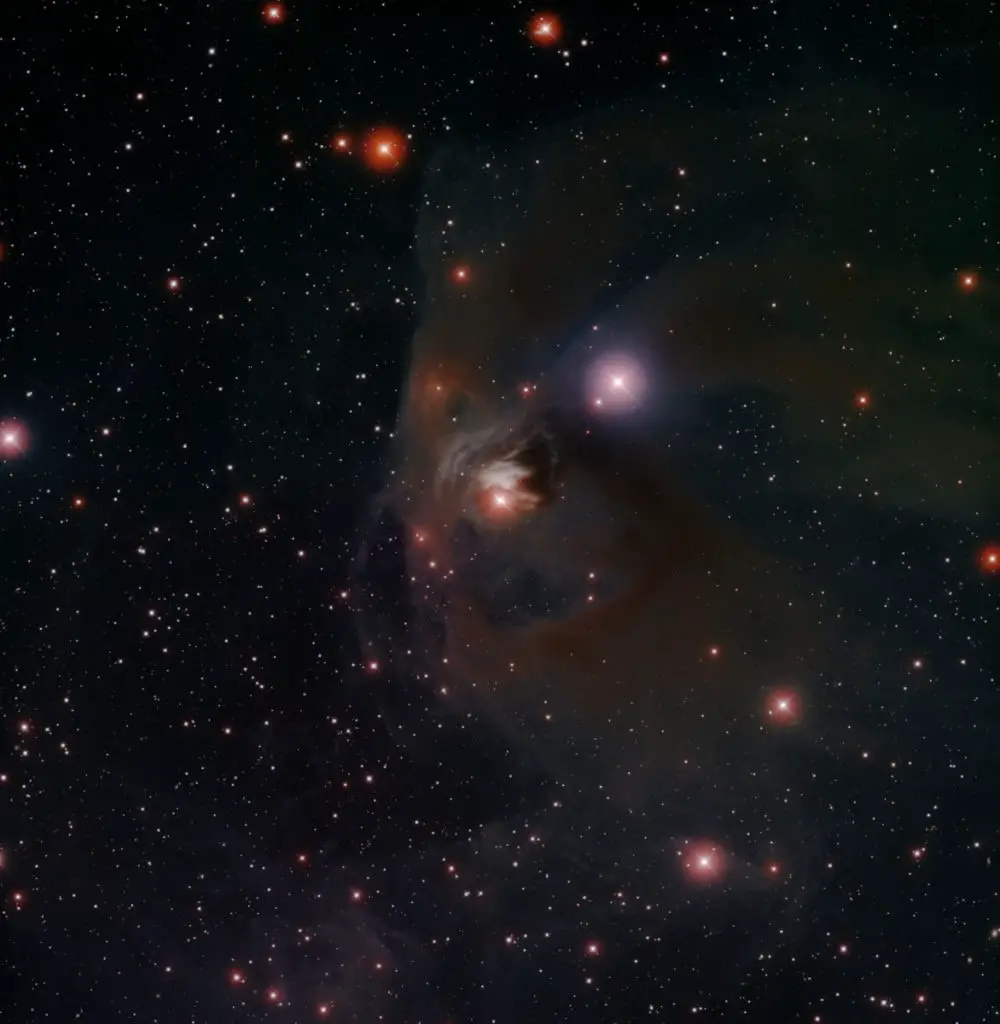
Image by T. Rector (U. Alaska Anchorage), H. Schweiker, WIYN, NOAO, AURA, NSF
Less than 10 million years old, the T Tauri Star’s core temperature is still too low for hydrogen fusion to occur. But it will heat up as it continues to gravitationally collapse the material near them until they are all blown away by the radiation pressure and stellar wind.
The emitted radiation and luminosity of the T Tauri Star entirely depend on the energy produced from the collapse of its surrounding material. They can also now be seen at the visible spectrum due to their recent emergence from their envelope of a dusty and gaseous shell.
T Tauri stars are known to show periodic and random fluctuations in brightness. As such, their classification cannot be based solely upon their luminosity and light curves. Possible explanations for this variability include instabilities in the accretion disk, violent activity in the atmosphere, or the molecular clouds’ movement.
These stars have also been known to produce strong x-rays, which are thought to result from coronal-like activities similar to that of our own Sun, except for the generation of fluxes that are up 104 times greater during its strongest solar flares.
As our Sun has been said to have passed through the T Tauri Star stage during its evolution, studies of these stars may offer us insights into the evolution of our own star, the solar system, and the planetary systems.
3. Main Sequence Star
Main Sequence Band
The main sequence is a band of continuous and distinct points on a plot of stellar color vs. luminosity. As all data points represent a star, all the stars on the main sequence band are known as a main-sequence star. And the plot these points are so famously plotted on is known as the Hertzsprung-Russell Diagram.
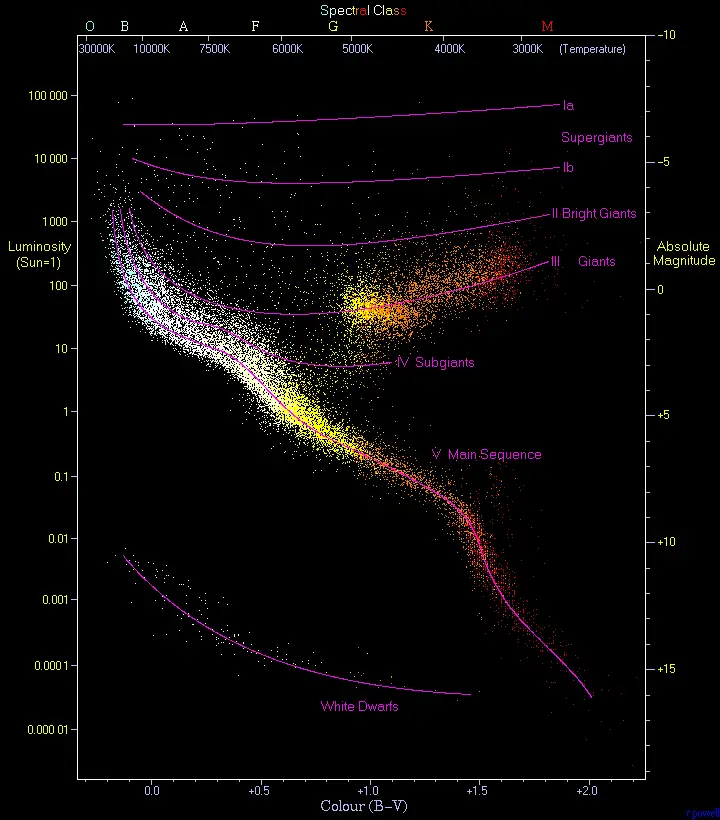
Image by Richard Powell (Wikipedia)
Depending on where the star lives on this diagram, they are also assigned a stellar class that is in order of decreasing mass and luminosity:
| Stellar Class | Color |
| O | Blue |
| B | Blue |
| A | Blue |
| F | Blue/White |
| G | White/Yello |
| K | Orange/Red |
| M | Red |
They are also placed into subclasses within these classifications from 0-9 based on their plot position. For example, our Sun is a G2V class star.
Main Sequence Star
Main Sequence Stars are also known as dwarf stars, and it is also the classification that contains 90% of all the stars in the universe. However, this interchangeability in terminology may prove confusing at times as there are dwarf stars that are either too big or too small to be considered a main-sequence star.
Otherwise, stars in the main sequence are characterized by their energy source, which is the fusion of hydrogen to create helium in the star’s core.
In most cases, the mass of the star determines its lifespan, size, and luminosity.
Size – The size of a main-sequence star is fixed as a function of its mass. An increase in mass equates to an increase in the radius of the star.
Lifespan – The main sequence stage is where a star will spend most of its life before evolving into a red giant. The more massive a star, the faster it will burn through its fuel as it exhibits a greater gravitational pull inwards. For example, a higher-mass star (10Msun) will only last in this stage for ~20 million years, while a lower-mass star (0.5Msun) will survive as a main-sequence for ~80 billion years.
Luminosity – The greater the mass, the brighter a star will shine. This can be demonstrated in a Mass-Luminosity relation – if we know where on the main sequence a star is plotted, its mass can also be inferred.
Properties of Main Sequence Stars
| Mass/MSun | Luminosity/LSun | Effective Temperature (K) | Radius/RSun | Main sequence lifespan (yrs) |
|---|---|---|---|---|
| 0.10 | 3×10-3 | 2,900 | 0.16 | 2×1012 |
| 0.50 | 0.03 | 3,800 | 0.6 | 2×1011 |
| 0.75 | 0.3 | 5,000 | 0.8 | 3×1010 |
| 1.0 | 1 | 6,000 | 1.0 | 1×1010 |
| 1.5 | 5 | 7,000 | 1.4 | 2×109 |
| 3 | 60 | 11,000 | 2.5 | 2×108 |
| 5 | 600 | 17,000 | 3.8 | 7×107 |
| 10 | 10,000 | 22,000 | 5.6 | 2×107 |
| 15 | 17,000 | 28,000 | 6.8 | 1×107 |
| 25 | 80,000 | 35,000 | 8.7 | 7×106 |
| 60 | 790,000 | 44,500 | 15 | 3.4×106 |
A main-sequence star will always remain in hydrostatic equilibrium until it has exhausted all of its fuel, which can be explained by the balance between the inward gravitational pull, and its gas and radiation pressure.
The gas continuously exerts back pressure as it gets compressed in the core. The energy created from hydrogen fusion exerts radiation pressure due to the photons’ action on the core’s extremely dense matter.
Yellow Dwarf Star
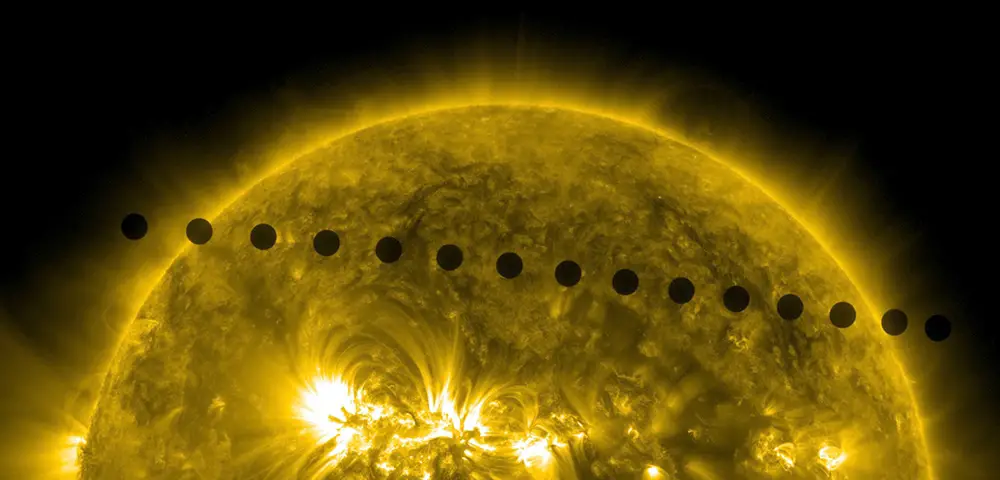
- Spectral Class G
- Weighs between 0.7-1 MSun
- The surface temperature is ~ 6000 degrees Celsius or ~ 6273.15 degrees Kelvin.
- Shines bright yellow/white
- Evolves into a Red Giant, which signals the end of the yellow dwarf star
- Our Sun is a yellow dwarf star.
- It converts 4 million tons of matter into energy every second, which is 30 billion times more powerful than all power generators on Earth.
Orange Dwarf Star
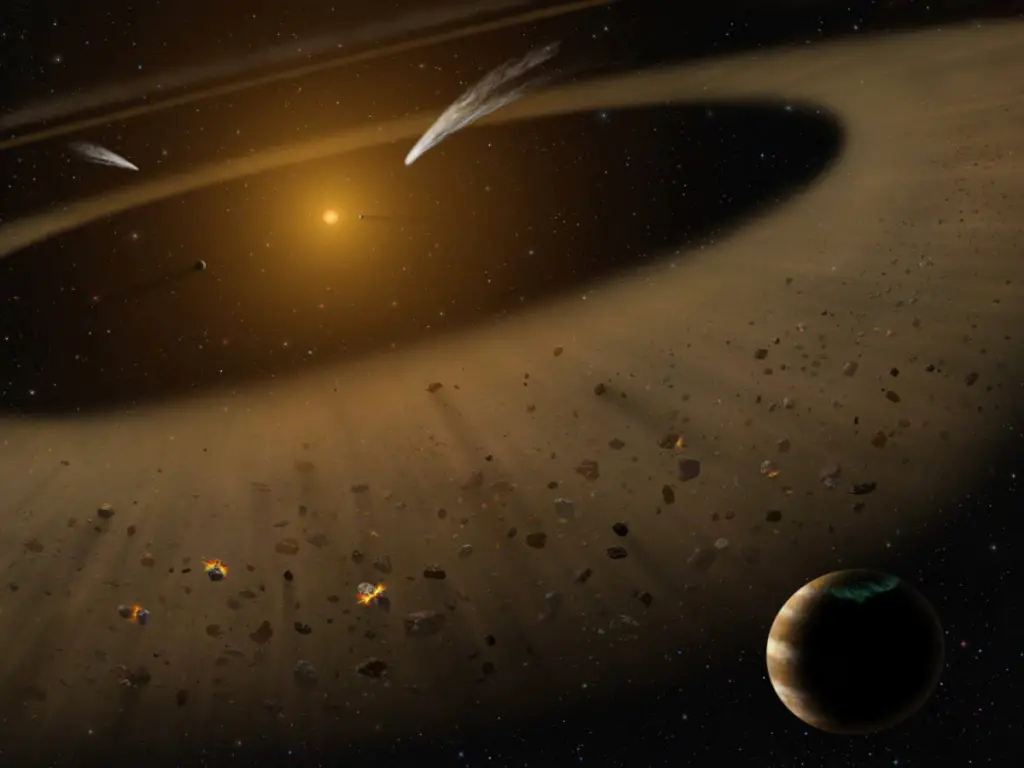
- Spectral Class K
- Size falls between the M and G class main sequence stars (smaller than our sun), weighing at ~ 0.8 MSun
- The surface temperature is between ~ 3900-5200 degrees Kelvins. (slightly cooler than the Sun ~5778 K)
- Good candidates in the search for extraterrestrial life
- Less UV and X-ray radiation
- Remain stable for longer (longer lifespan)
- Longer time for the growth of life and their evolution
- Four times more common than G class star, making it easier to search for exoplanets.
Red Dwarf Star
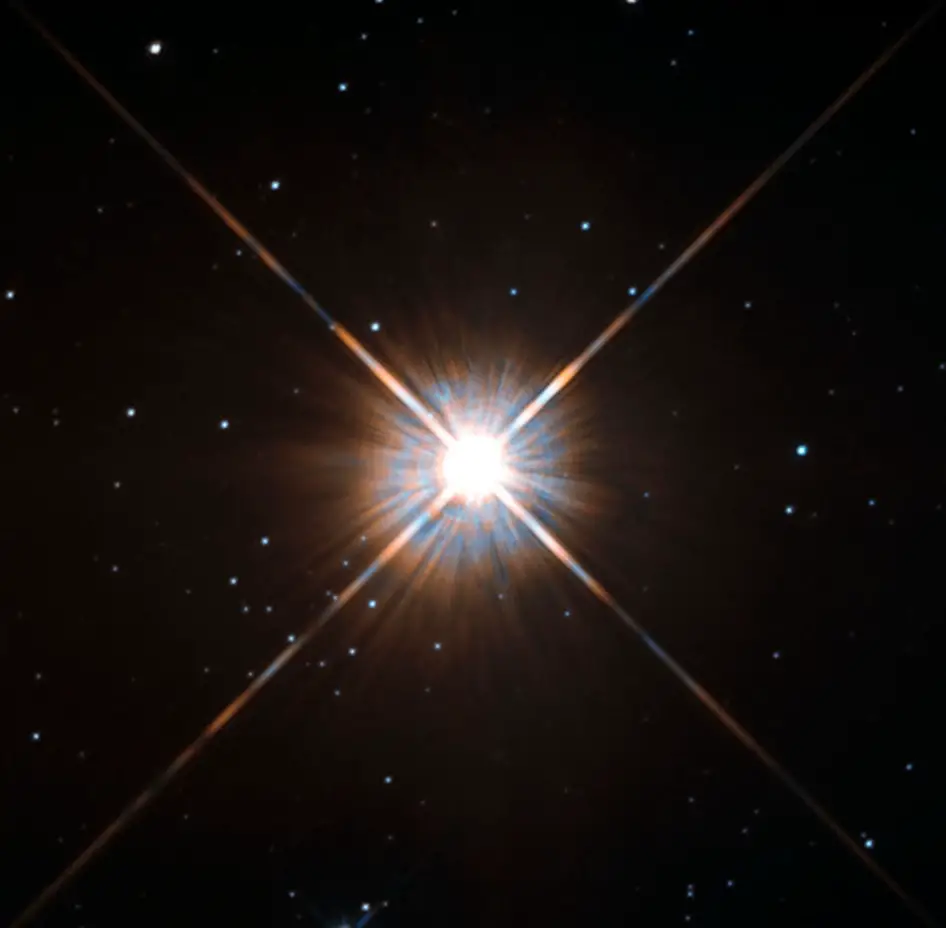
- Spectral Class M
- Lowest mass out of all main sequence stars weighing at 0.08-0.6 MSun
- The surface temperature is between ~ 2000-3500 degrees Kelvins.
- Dimmest star (luminosity is between 0.0001 and 0.1 times the Sun)
- The most common type of star in the universe and lives the longest.
- Will not evolve into a Red Giant.
- The convection process of a red dwarf is 100% efficient. This allows the hydrogen to be constantly recirculated from the outer regions back to the core, which successfully burns the entire hydrogen supply in the process.
- The Sun (yellow dwarf) only burns 10% of its hydrogen in the core, which leaves a shell around its helium core.
- Predicted to evolve into a blue dwarf.
- A theoretical type of star that develops from a red dwarf after it has completely exhausted its hydrogen supplies, which then ultimately ends its life as a white dwarf.
4. Non-Main Sequence Dwarf Stars
White Dwarf Star
Only low to medium mass main sequence stars (like our Sun) can evolve into a white dwarf star, as it must deplete the entirety of its hydrogen fuel and also lack the mass (gravitational force) to force higher elements (ex. metallic) into another fusion reaction.
This lack of fusion reaction results in a Red Giant, and as the star collapses inwards due to its gravity, it will expel most of its outer material, which creates a planetary nebula. With everything ejected, the hot core remaining is what becomes the scorching white dwarf star.
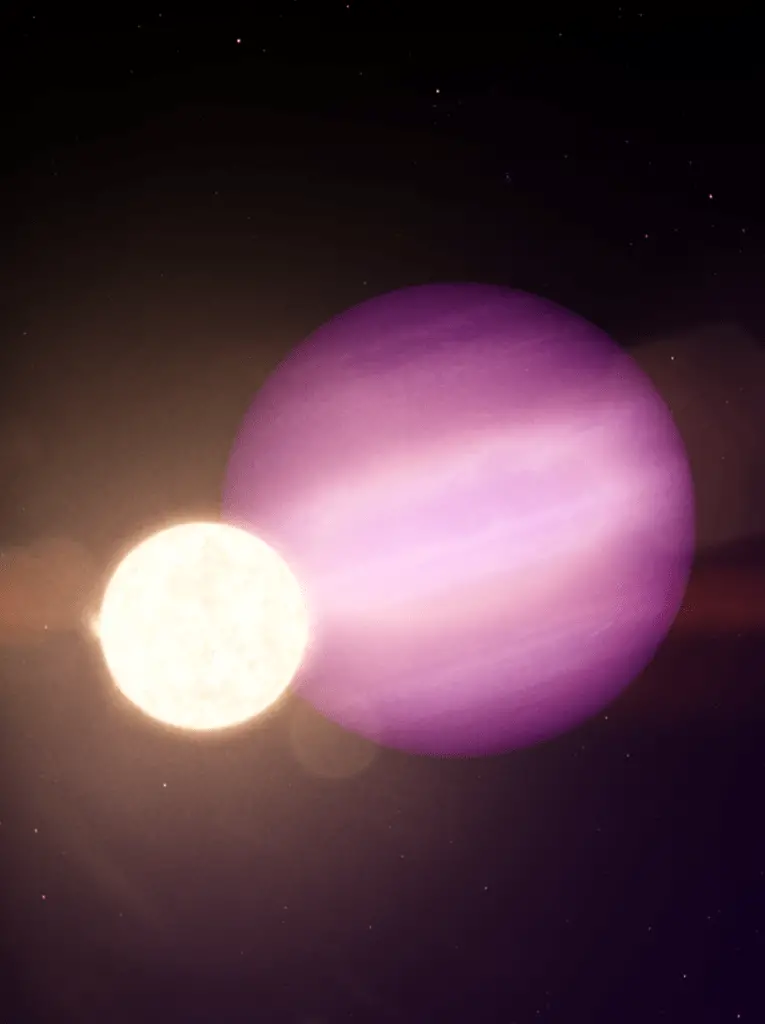
With only the hot core remaining, the white dwarf survives its internal collapse, not by nuclear fusion, but by the principles of quantum mechanics.
As the gravity of the core compacts all matter inwards, the density of electrons also becomes increasingly higher. This effect creates a “degenerate” gas, meaning all the available energy levels in this space are filled with electrons with no regard for their spin. Under normal circumstances, identical electrons with the same spin are not allowed to occupy the same energy level.
Once the white dwarf becomes “degenerate”, gravity cannot compress it further as there is no more available space to be filled. Thus, the core is prevented from collapse.
About White Dwarfs
- The temperature of a white dwarf exceeds 100,000 degrees Kelvin at the start of its formation. It will continuously cool until it reaches the universe’s background temperature, which has been estimated to take ~100 billion years.
- The brightness of this star is a result of its residual heat.
- A white dwarf is about 200,000 times as dense as Earth, making it one of the densest collections of matter surpassed only by neutron stars.
- The more mass a white dwarf contains the smaller its size.
- Due to degenerate matter, more mass results in a higher gravitational force that compresses the electrons together.
- 1.4 times the Sun’s mass is the limit on the amount of mass a white dwarf can have. This was discovered by Subrahmanyan Chandrasekhar, to which the limit was appropriately named the “Chandrasekhar limit“.
- The Atmosphere of White Dwarfs
- Heavy atoms will sink, while lighter atoms will remain at the surface.
- Some atmospheres are made of pure hydrogen or helium.
- The gravity of the white dwarf can pull its atmosphere so close that it would be located around the top of the skyscrapers on Earth.
Black Dwarf Star
Black Dwarf Stars are the theoretical stellar remnant of a white dwarf star that has cooled by thermal radiation to the universe’s background temperature.
It also emits very little radiation, so it is only detectable by observing its gravitational influences on its surroundings.
These stars’ evolution and physical properties are very poorly understood, so it is uncertain how long it would take for a white dwarf to fade to darkness. (Has been said to be influenced by the nature of dark matter and rate of proton decay)
It has been estimated to take 1015 years for a white dwarf to cool to 5 degrees Kelvin. But if weakly interacting massive particles (WIMPS) exist (candidates for what makes up dark matter), a white dwarf can remain much warmer through WIMPS interaction for approximately 1025 years.
Proton stability will also impact the amount of energy released from proton decay, keeping a white dwarf warm. Proton decay can raise the effective surface temperature of an old one solar mass white dwarf to approximately 0.06 K, which is thought to be warmer than the cosmic background radiation temperature.
Brown Dwarfs

Image by NASA/ESA/JPL
Brown Dwarf Stars are protostars that never became hot enough for the hydrogen fusion process.
These are often considered “failed stars” and are smaller than the Sun but larger than Jupiter (15-75 times the mass of Jupiter). With such a low range of masses, brown dwarfs would not have produced enough gravitational force to sustain hydrogen fusion.
Even though a brown dwarf is not considered a main-sequence star, they still shine dimly as they begin to cool down.
5. Neutron Stars
Neutron stars are the remnant cores of high mass main sequence stars (2-3 solar mass) after a red supergiant goes supernova. This collapse can be imagined as something the mass of a Sun being squished down into a city’s size!
This collapsed core is comprised entirely of neutrons (no electric charge) as every proton and electron have been crushed to form neutrons. These neutrons are supported against their own mass through “neutron degeneracy pressure“.
Many neutron stars are undetectable as they do not emit enough radiation. But some have been found to produce x-rays or spin wildly with extreme magnetic fields.
It is important to note that a main-sequence star more massive than 3 solar masses will undoubtedly collapse into a black hole instead of a neutron star.
Pulsars
Most neutron stars are observed as pulsars, which are rapidly spinning neutron stars that emit energy in pulses. These pulses are regular intervals that can range anywhere from milliseconds to seconds.
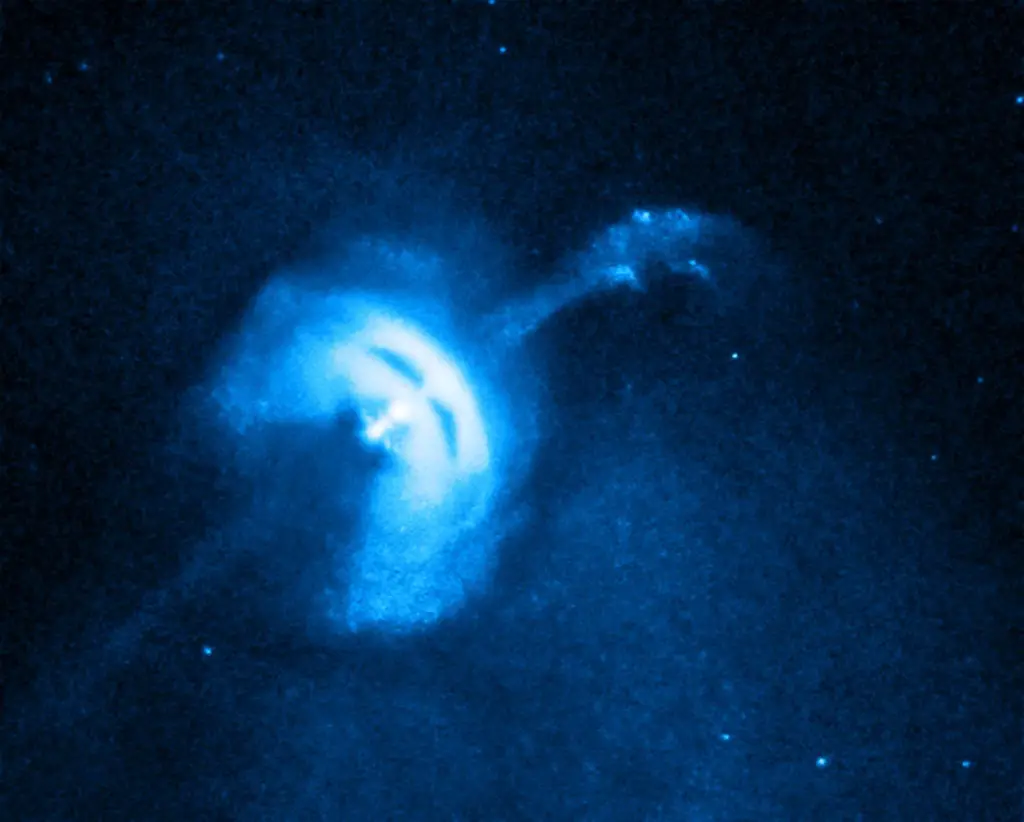
X-Ray Image by NASA/CXC/Univ of Toronto/M.Durant et al; Optical: DSS/Davide De Martin
The strong magnetic fields of the pulsars funnel jets of particles out along its two magnetic poles, which produce powerful beams of light. Although the magnetic poles are often not aligned with the pulsar’s spin axis, so these beams of light are observed to “sweep around” as the star rotates.
When a beam sweeps across our line of sight on Earth, we can see a pulse, just like a lighthouse!
Magnetars
Like its name suggests, a magnetar has a very powerful magnetic field.
In a normal neutron star, the magnetic field is already trillion times stronger than that of Earth. But in a Magnetar, it’s another 1000 times stronger!
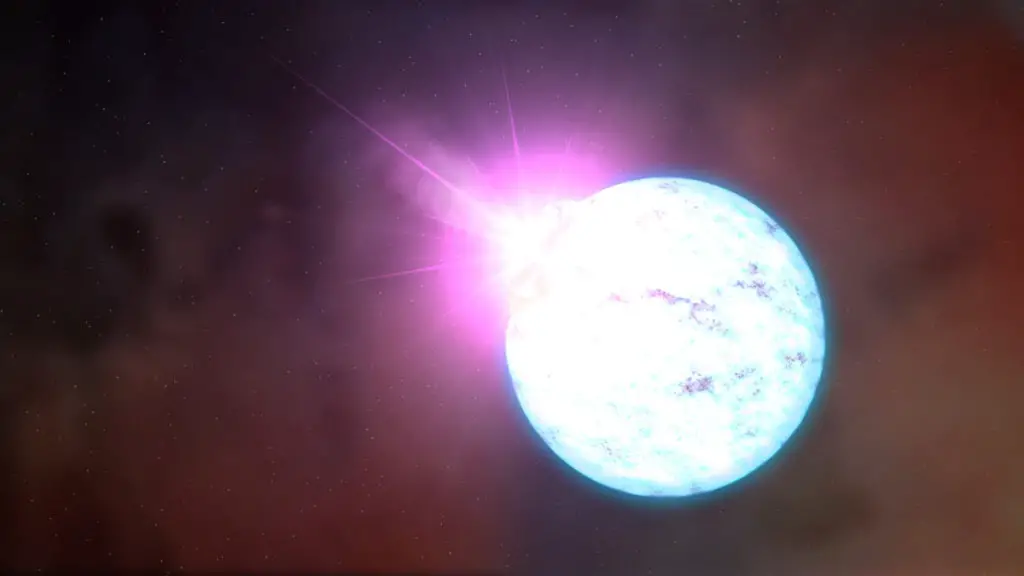
Image by NASA’s Goddard Space Flight Center
Since the crust of a neutron star can be under immense strain due to its magnetic field’s strength, even small movements can be catastrophic as explosions ripple across the crust, sending out blasts of electromagnetic radiation. In a magnetar where the magnetic field is a thousand times stronger, one can only imagine what might happen.
The magnetar SGR 1806-20 had a burst where in 1/10 of a second, it released more energy than the Sun has emitted in the last 100,000 years!
6. Giant and Supergiant Stars
Giants and Supergiants are the next stage in stellar evolution for main-sequence stars of varying masses.
These stars form when a main-sequence star beings to run out of hydrogen and starts fusing helium or higher elements.
If there is no longer any fuel left to burn, the core will begin its collapse as the decreasing radiation and gas pressure allows gravitational forces to push towards the center, which causes the core to get hotter. The heat results in the expansion of the outer layer into a planetary nebula (Red Giant) or goes supernova (Red Supergiant).
These stars burn fast in this stage, and will consume all of the fuel in its core within a few million years.
Red Giants
Red giants are the next stellar evolutionary stage for low and medium mass main sequence stars.
In a red giant, its usable hydrogen fuel in the core has already been depleted. It is in the processing of fusing the hydrogen shell remaining around its inert helium core. When the shell has been burned up, it will begin to fuse the remaining helium into carbon for the next few million years.
After completely depleting its helium stores, a red giant’s mass (lack of gravitational force) will not allow it to use any other heavy elements for the fusion process. Thus the star will collapse on its core and be on its way to becoming a white dwarf.
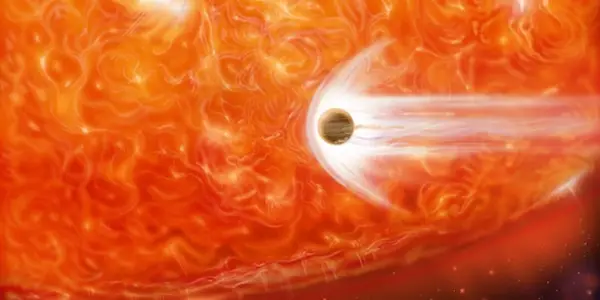
Image by NASA/Penn State
About Red Giants
- Spectral Class K and M
- 100 – 1000 times the size of our Sun.
- The surface temperature reaches 2200-3200 degrees Celsius, which is a little over half as hot as the Sun.
- This phase will only last approximately 0.1-2 billion years before its fuel runs out, which will then expel most of its material into a planetary nebula and then a white dwarf.
- Our own Sun will become a red giant, and will eventually expand to consume Earth.
Red Supergiants
Red supergiants are the largest stars in the universe, as it evolves from high mass main sequence stars that are 10-70 times the size of the Sun.
After burning through the hydrogen shell surrounding its inert helium core, the red supergiant will then exhaust the helium core to form carbon within the next 1-2 million years. This carbon will then be fused until an iron core has built up. As the star’s mass is no longer sufficient to burn through such a heavy element, the fusion process will stop, and the red supergiant will collapse into a supernova.
Note: Red supergiants have enough mass (gravitational force) to fuse heavier elements when helium runs out, as such their atmospheres don’t disperse into planetary nebulas.
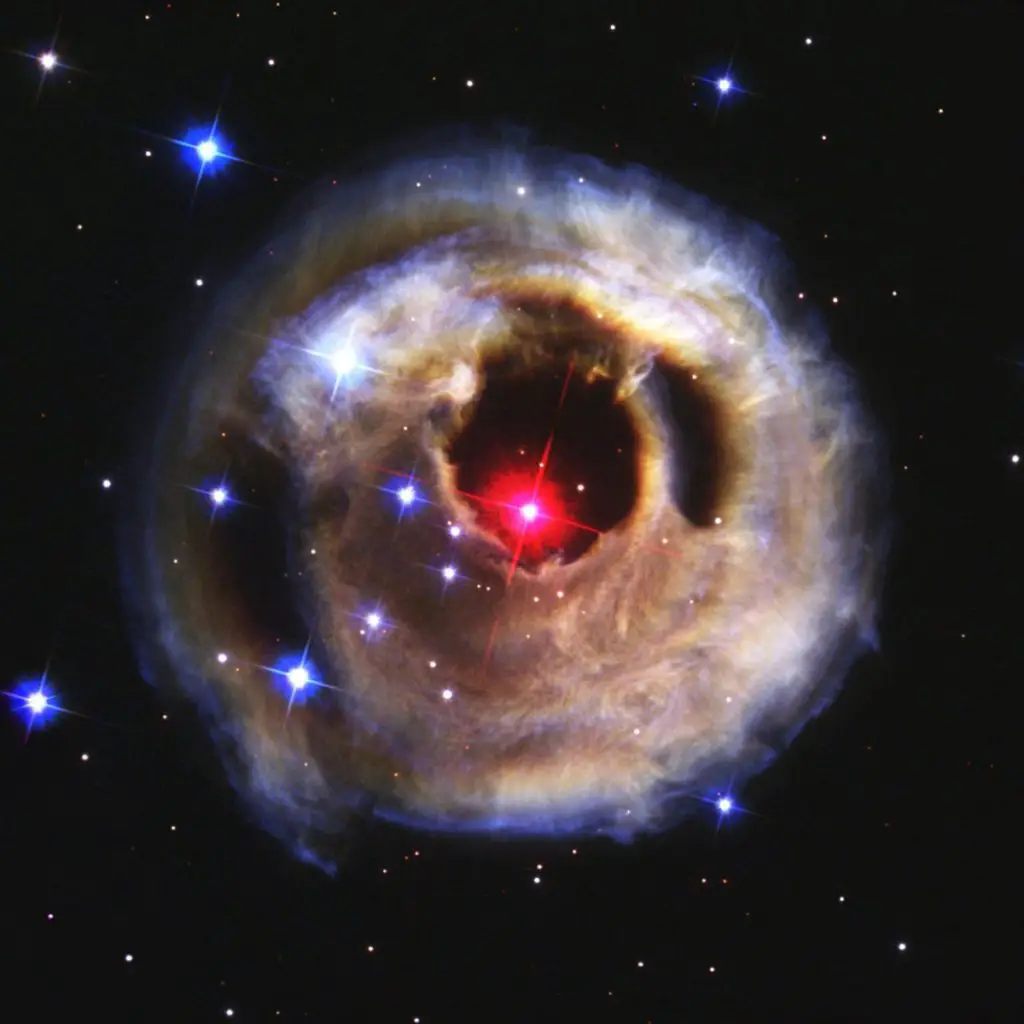
Image by NASA, ESA, and The Hubble Heritage Team (STScI/AURA)
About Red Supergiants
- Spectral Class K and M
- Surface temperature below 4100 degrees Kelvin
- Mass ranges from 10-40 solar masses
- Some are 30,000+ times brighter than the Sun
- Due to its extreme mass, it has a shorter lifespan of around a few hundred thousand years to 30 million years
- Prevalence of around 0.0001%
Blue Giants
Like Red Giants, Blue Giants are evolved from low and medium main-sequence stars, with the difference being that blue giants have not finished burning through their hydrogen stores. The fusion of hydrogen causes the star to burn hotter, which results in its blue glow.
The name blue giant is also often used to refer to stars that have evolved from the main sequence (finished burning its hydrogen) but have nothing in common.
No blue giants ever remain in this stage, it will eventually turn into a red giant as it begins to burn helium.
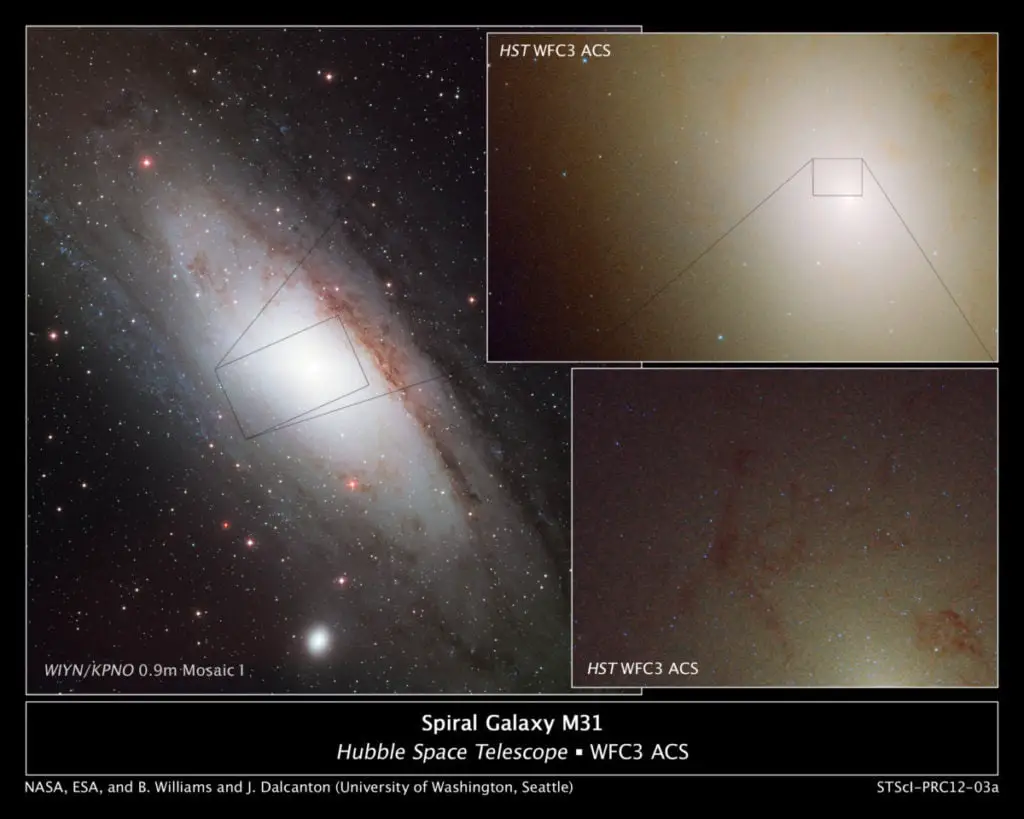
Image and description by NASA; ESA; B. Williams and J. Dalcanton, University of Washington, Seattle
About Blue Giants
- Spectral class O and B
- Luminosity Class II and III (Extremely luminous!)
- Refers to a specific region of the Hertzsprung Russell Diagram rather than a specific type of star
- Surface temperature of 20,000+ degrees Kelvin (the surface temp of the sun is 6000 degrees Kelvin)
Blue Supergiants
Like Red Supergiants, Blue Supergiants have completely depleted both their hydrogen and helium stores. Still, the blue supergiant actually fuses heavier elements at a slower rate (helium fused into carbon and oxygen), where these heavy elements can start to appear near the surface of the star as well.
The fusion rate can vary wildly during this stage, which is why a blue supergiant can often oscillate between a blue and red supergiant. (Faster fusion rate results in lower surface temp, producing a red glow in the process)
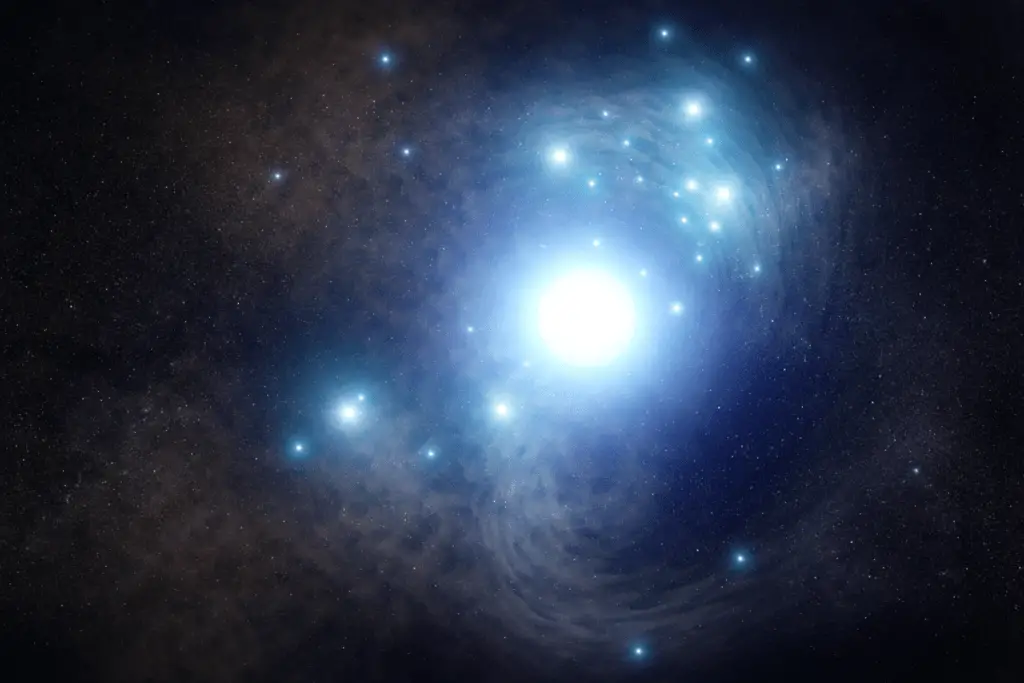
Image by NASA, ESA, and J. Olmsted (STScI)
About Blue Supergiants
- Spectral Class O and B9 or earlier
- Luminosity Classification I
- A surface temperature of approximately 20,000-50,000 degrees Kelvins
- Mass ranges between 10-20 solar mass
- 25 times larger in size than the Sun
- It has a lifespan of a few hundred million years due to its slower fusion rate.
7. Binary Stars
Binary stars are a system of two stars that revolve around a common centre of mass (barycentre).
The brighter of the two stars is officially classified as the primary star, while the dimmer is classified as the secondary.
Half of all the stars we know are in a group of at least two stars. Even Polaris (the famous northern star) is part of a binary star system!
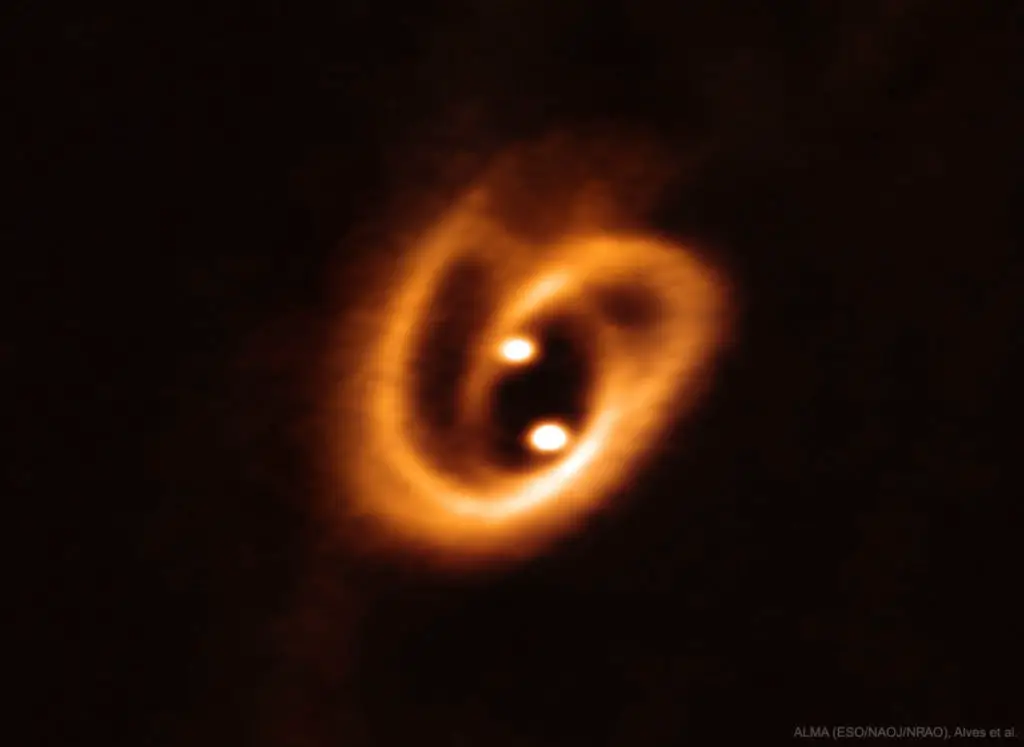
Image by ALMA (ESO/NAOJ/NRAO), F. O. Alves et al.
Optical Double Star
- Two stars that only appear close to each other because they are in the same line of sight.
- The “doubleness” depends on this optical effect.
- The two stars share no physical connection
Spectroscopic Binaries
- Stars that appear too close or distant when viewed through a telescope, so we have to use the wavelengths of their emitted light to determine its real binary nature.
- The spectrum of this binary system will be a combination of the spectra from each of the stars.
Astrometric Binaries
- Stars that seem to move by themselves in an empty space.
- Its companion can only be inferred as it could be too dim for detection.
Eclipsing Binaries
- Two stars appearing to be only one that varies in brightness.
- This is due to each of the stars periodically obscuring one another if they orbited on a plane that’s within our line of sight on Earth.
Close Binaries
- In this binary system, one star transfers its mass to the other.
- The primary usually consume material from the secondary.
- Sometimes, the gravitational attraction of the brighter star is enough to consume the secondary completely.
X-Ray Binaries
- In this binary system, one of the stars is a collapsed object (white dwarf, neutron star, black hole, etc.).
- The matter is stripped from the non-collapsed star into the collapsed star, which produces x-rays.
8. Variable Stars
Cepheid Variable Star
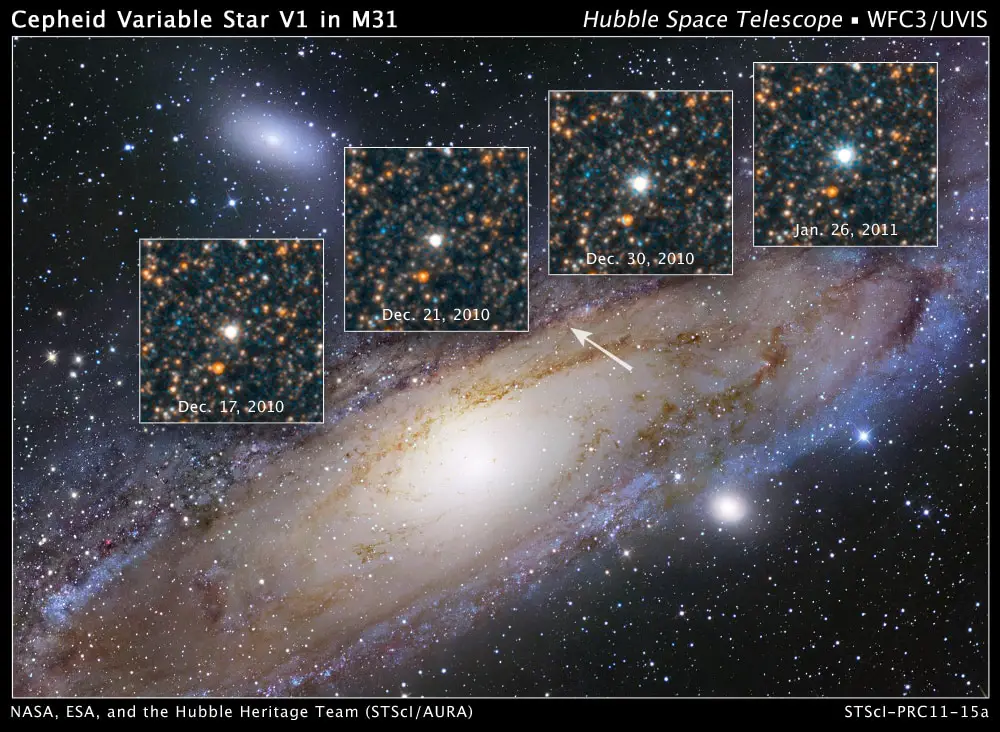
Image by NASA, ESA, and the Hubble Heritage Team
- Periodic pulsations in size and change in brightness.
- Ex. Increasing in size and decreasing in brightness, then vice versa.
- The fluctuations might be due to a star’s current unstable phase; however, they are often predictable with a well-defined stable period and amplitude.
- This can measure distance with the distance modulus equation using the magnitude of its absolute luminosity and observed/apparent luminosity.
References
- Chini, R., Hoffmeister, V., Kimeswenger, S., Nielbock, M., Nürnberger, D., Schmidtobreick, L., & Sterzik, M. (2004). The formation of a massive protostar through the disk accretion of gas. Nature, 429(6988), 155–157. https://doi.org/10.1038/nature02507
- Star Classification – Zoom Astronomy. (n.d.). Enchanted Learning. Retrieved March 5, 2021, from https://www.enchantedlearning.com/subjects/astronomy/stars/startypes.shtml
- University of Utah. (n.d.). ASPIRE. ASPIRE. Retrieved March 5, 2021, from http://sunshine.chpc.utah.edu/Labs/StarLife/protostars.html
- Las Cumbres Observatory. (n.d.). Protostar. Retrieved March 5, 2021, from https://lco.global/spacebook/stars/protostar/
- Swinburne University. (n.d.). T Tauri Stars | COSMOS. Retrieved March 5, 2021, from https://astronomy.swin.edu.au/cosmos/T/T+Tauri+Stars
- aavso. (n.d.). T Tauri | aavso. Retrieved March 5, 2021, from https://www.aavso.org/vsots_ttau
- CSIRO. (n.d.). Main Sequence Stars. Australia Telescope National Facility. Retrieved March 5, 2021, from https://www.atnf.csiro.au/outreach/education/senior/astrophysics/stellarevolution_mainsequence.html
- Jones, T. (2021, January 11). Types of Stars. AstroBackyard | Astrophotography Tips and Tutorials. https://astrobackyard.com/types-of-stars/
